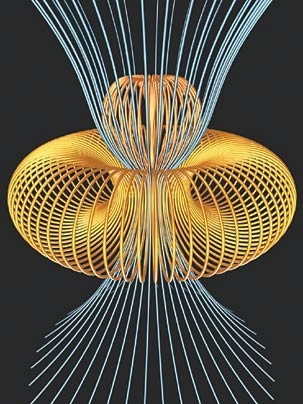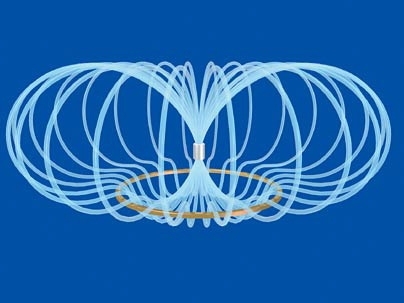The MIT Museum is offering an insider's view of how MIT is redesigning its beginning physics course. Technology-enabled active learning (TEAL) merges lectures, hands-on desktop experiments and simulations to create a rich learning experience. Through visualizations of complex physical phenomena and the associated desktop experiments, the three-phase exhibition at the museum follows the progression of course 8.02 (Introduction to Electricity and Magnetism).
The top image at right shows the field of a permanent magnet suspended above a ring of current. The magnet is oriented such that its north pole faces downwards, while the current in the ring flows counter-clockwise. The resulting pressure in the field between the two objects causes the magnet to be repelled, feeding a force upwards that allows it to be levitated above the ring. The image shows selected fieldlines colorized and rotated about the vertical axis.
The second image at right shows the magnetic field of a permanent magnet falling through a conducting ring. As it falls, the magnetic flux through the ring increases, inducing a current in the ring. The induced current generates a magnetic field that opposes the field of the magnet, which can be seen at the bottom of the image where the fieldlines are compressed away from the ring. This phenomenon is known as Faraday's Law.
The first phase of the exhibition is on view through Feb. 13; the second phase, Feb. 16 to April 18; and the third phase April 20 through June 5.
A version of this article appeared in MIT Tech Talk on February 9, 2005 (download PDF).







